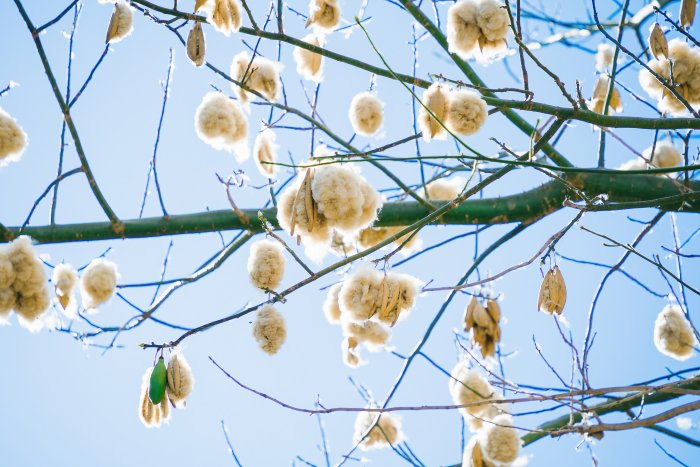Caribbean Silk Cotton Tree And Its Dangerous Spirits In Myths And Legends
Ellen Lloyd - AncientPages.com - Whether feared or admired, trees have always held a special place in the beliefs of ancient people. We encountered sacred trees in every corner of the world. There was a time when many of our ancestors were forest dwellers and relied on natural resources. Trees could offer shelter, healing, and protection, but some trees were feared and occasionally also avoided.
White silk cotton tree. Credit: Adobe Stock - Ilena
Trees As Abode Of The Dead
Many cultures were convinced trees were home to the souls of the dead or spirits. These invisible entities could be as benevolent as malevolent. Some were troubled, angry souls who could not find peaceful rest and tormented the living. Others were well-wishing spirits who could protect an individual from evil influences.
There are countless legends of fascinating trees and their indwelling spirits. Some are said to pose a real danger to humans on specific dates.
Avoid The Silk Cotton Tree On October 31 - Halloween
Turning our attention to the Caribbean, we encounter the silk cotton tree that is as magnificent as mysterious, according to old tales.
Known as the Ceiba Tree and the Kapok Tree in Asia, the silk cotton tree is one of the largest trees in the American tropics. It can gain a height of 80 feet or more and a diameter of five to eight feet. As previously discussed on Ancient Pages, the Ceiba Tree is sacred to the Mixtec, Aztec, Maya, and many other cultures.
To the people living in the Caribbean region, the silk cotton tree has long played a vital spiritual role, as reflected in myths, legends, and folklore.
Some tree spirits can be harmful. Credit: Adobe Stock - New Arty
One unusual and intriguing tale concerns the warning of approaching the silk cotton tree on October 31 because ghosts living in the tree can be harmful on that date. It is a bit surprising Souls of the Dead should be more active at that time of the year since Halloween celebrations are rare in most Caribbean countries. On the other hand, Caribbean culture is full of chilling tales of demons, dangerous spirits, evil creatures, spooky places and events, so there might be a connection after all.
According to the beliefs of the Caribbean people, one should “never cut down a silk cotton tree except you throw a quantity of rum and rice around the root, otherwise the duppies who live in the trunk will injure you.” 1
Silk Cotton Tree And The Shadow Killers
The silk cotton tree has long been associated with magic, and the Obeah. “It is said that some hundred years ago, the people of Jamaica believed in the powers of so-called “Shadow Killers.”
These were witches, wizards who spread terror by practicing black magic. The so-called “Shadow Killers” were men and women who became known as Obeah. What made many people especially afraid of the Obeah were the rumors that they could kill people by capturing their shadows.” 2
It should be added that most people in Jamaica did not approve of or practice Obeah. However, this could explain the belief that ghosts reside in the silk cotton tree. Adding to this is the gruesome story of how the Spaniards hid stolen treasures under the tree and then murdered the enslaved person who buried it so that his spirit would guard the treasure and no one would dare dig for it. “The same story is told in Guyana, except that it was the Dutch, rather than the Spanish, who would use this method to guard treasure.” 3
Taínos And The Forest Spirits Opías
The Taíno people, a historic indigenous people of the Caribbean, believed the forests were home to the spirits of the dead called opías. Research offers genetic evidence clearly showing the Taíno people were never wiped out. “Using a 1,000-year-old tooth to sequence the first complete ancient human genome from the Caribbean, researchers can now confirm the Taino people are not extinct and still have living descendants in the Caribbean today.” 4 The legends of the opías have been kept alive, and some of the Taínos still believe in these elusive forest spirits.
The Ceiba tree reaches heights of 80 feet or more. Credit: Adobe Stock - Lucy Brown
Among all the spirits that are supposed to dwell in the forest, the opías can be easily recognized because they lack navels. When darkness has fallen or sometimes during the night, the opías emerge from the silk cotton tree and feast on guayaba fruit. “In fact, it is tropical bats who eat guayaba fruit at night which led the Tainos to associate opías with bats.” 5
“They say a certain cemí, Opiyelguobirán, had four feet like a dog and is [made] of wood, and often he comes out of the house at night and enters the forests. They go there to seek him and bring him back to the house. They bind him with cords, but he returns to the forests,” Ramón Paní, the Jeronymite friar who was sent by Columbus to study the native mythology wrote.
José Juan Arrom (1910 – 2007), a famous expert on Latin American cultural studies, “suggested that this spirit who constantly sought the woods, where the the opías or spirits of the dead dwelt, served as the daylight guardian. Greek mythology assigned a similar role to Cerberus, the three-headed dog who stood at the river crossing that marked the entrance into the realm of Pluto.”5
Silk Cotton Tree As The Sacred Tree Of Life
Many Caribbean tribes believe the Silk Cotton Tree is the Tree of Life created by God Makonaima and is thus sacred.
“One myth reads: “Makonaima caused a wonderful tree, bearing all good fruits, to spring from the Earth—the tree which was the origin of all cultivated plants.
The stump of this tree was filled with water, and was stocked with many kinds of fish. A number of myths hold that this tree was the silk cotton tree (Ceiba pentandra) or Ite palm, and claim that Makonaima created animated beings by cutting off pieces of this tree with an ax and throwing them into the river.” 5
Duppies Living In The Silk Cotton Tree
In Jamaica, it is believed that cotton trees should never be cut down because they are the abode of spirits, and those who cut them down will surely die.
Some spirits appear only when it is dark. Credit: Adobe Stock - Петр Костюк
People in Jamaica believed duppies (spirits of the dead) lived in the silk cotton tree. These beings are not to be trusted as they are well-known for various mischief. Duppies can be harmful to the living and cause a person to become ill or physically hurt. If a duppie had harmed the person, they had to get medicinal cures from a local healer. People in modern Jamaica have kept the belief in duppies as a part of their heritage, but the practices associated with these beliefs have faded with time.
People have and will always have a unique and precious connection with trees, and their welfare holds a special place in our minds and hearts.
Written by Ellen Lloyd – AncientPages.com
Copyright © AncientPages.com All rights reserved. This material may not be published, broadcast, rewritten or redistributed in whole or part without the express written permission of AncientPages.com
Expand for references- “Folklore of the Negroes of Jamaica.” Folklore 15, no. 1 (1904): 87–94.
- Ellen Lloyd - Obeah: Who Were The Feared Shadow Killers Of Jamaica? AncientPages.com
- Avad S - Legends of the Silk Cotton Tree and the Demon, Bazil, Caribbean Folklore - Mythology & Folklore Amino
- Conny Waters - Taíno Indians Are Not Extinct – Ancient Tooth Reveals Indigenous Americans Still Have Living Descendants In The Caribbean - AncientPages.com
- Altman, Nathaniel - Sacred Trees: Spirituality, Wisdom & Well-Being
More From Ancient Pages
-
 Porobonus – Mysterious Unknown Pagan God
Artifacts | Aug 28, 2015
Porobonus – Mysterious Unknown Pagan God
Artifacts | Aug 28, 2015 -
 Controversial ‘Anomaly’ Discovered On Mount Ebal Could Be Biblical Joshua’s Altar
Biblical Mysteries | Apr 6, 2020
Controversial ‘Anomaly’ Discovered On Mount Ebal Could Be Biblical Joshua’s Altar
Biblical Mysteries | Apr 6, 2020 -
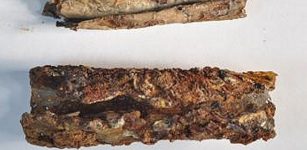 CT Scanning And 3D-Modelling Used To ‘Unfold’ Ancient Silver Plate Found In Jerash
Archaeology | Dec 26, 2015
CT Scanning And 3D-Modelling Used To ‘Unfold’ Ancient Silver Plate Found In Jerash
Archaeology | Dec 26, 2015 -
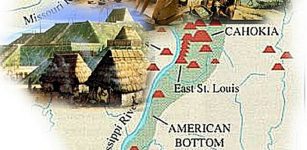 Unsolved Mysteries Of Cahokia – What Really Happened With The Large Metropolis?
Civilizations | Jan 15, 2015
Unsolved Mysteries Of Cahokia – What Really Happened With The Large Metropolis?
Civilizations | Jan 15, 2015 -
 Unas (Unis): First Pharaoh Who Decorated His Burial Chamber With Pyramid Texts
Featured Stories | Jun 3, 2021
Unas (Unis): First Pharaoh Who Decorated His Burial Chamber With Pyramid Texts
Featured Stories | Jun 3, 2021 -
 Amazing Archaeological Discovery In Washington Confirms Thousand-Year-Old Legend
Featured Stories | Jul 7, 2024
Amazing Archaeological Discovery In Washington Confirms Thousand-Year-Old Legend
Featured Stories | Jul 7, 2024 -
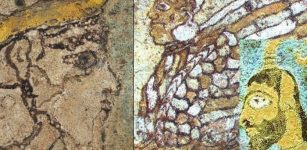 2,000-Year-Old Smuggled Glazed Bricks Sent Back To Iran By Switzerland
Artifacts | Dec 29, 2020
2,000-Year-Old Smuggled Glazed Bricks Sent Back To Iran By Switzerland
Artifacts | Dec 29, 2020 -
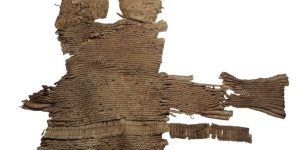 2,700 Year Old Equestrian Armor In Assyrian-Style Leather Evidence Of Technology Transfer In Antiquity
Archaeology | Dec 9, 2021
2,700 Year Old Equestrian Armor In Assyrian-Style Leather Evidence Of Technology Transfer In Antiquity
Archaeology | Dec 9, 2021 -
 A 4,500-Year-Old Collective Tomb In France Reveals Its Secret – The Final Stage In The Formation Of The ‘European Genome’
Featured Stories | Jul 5, 2024
A 4,500-Year-Old Collective Tomb In France Reveals Its Secret – The Final Stage In The Formation Of The ‘European Genome’
Featured Stories | Jul 5, 2024 -
 Paleoindian Ochre Mine Found In Submerged Caves In Mexico’s Yucatan Peninsula
Archaeology | Jul 6, 2020
Paleoindian Ochre Mine Found In Submerged Caves In Mexico’s Yucatan Peninsula
Archaeology | Jul 6, 2020 -
 ‘Little Foot’ Is An Entirely New Species Of Early Human – Researchers Say
Archaeology | Jan 3, 2019
‘Little Foot’ Is An Entirely New Species Of Early Human – Researchers Say
Archaeology | Jan 3, 2019 -
 Lost Advanced Ancient Forest Civilization In The South West Pacific Could Re-Write History – Legends And Archaeological Findings Examined
Ancient Mysteries | Apr 25, 2018
Lost Advanced Ancient Forest Civilization In The South West Pacific Could Re-Write History – Legends And Archaeological Findings Examined
Ancient Mysteries | Apr 25, 2018 -
 What Did Bronze Age People Do With All That Bronze?
Featured Stories | Aug 5, 2024
What Did Bronze Age People Do With All That Bronze?
Featured Stories | Aug 5, 2024 -
 Unique Chachabamba Complex Hidden In Peruvian Forest Reveals Its Secrets
Archaeology | Feb 7, 2019
Unique Chachabamba Complex Hidden In Peruvian Forest Reveals Its Secrets
Archaeology | Feb 7, 2019 -
 ‘Spectacular’ New Find: Roman Military Camps In Desert Found By Archaeologists Using Google Earth
Archaeology | Apr 27, 2023
‘Spectacular’ New Find: Roman Military Camps In Desert Found By Archaeologists Using Google Earth
Archaeology | Apr 27, 2023 -
 Mask Of Shame: Worn In Ancient Times As Punishment For Gossiping
Ancient History Facts | Jan 5, 2017
Mask Of Shame: Worn In Ancient Times As Punishment For Gossiping
Ancient History Facts | Jan 5, 2017 -
 Unique 1,600-Year-Old Gold Bead Found By Teenager In Jerusalem’s City Of David
Archaeology | Feb 9, 2023
Unique 1,600-Year-Old Gold Bead Found By Teenager In Jerusalem’s City Of David
Archaeology | Feb 9, 2023 -
 Aboriginals Finely Serrated And Perforated Shell Artifacts – Evidence From The Murray River, Australia
Archaeology | Sep 17, 2021
Aboriginals Finely Serrated And Perforated Shell Artifacts – Evidence From The Murray River, Australia
Archaeology | Sep 17, 2021 -
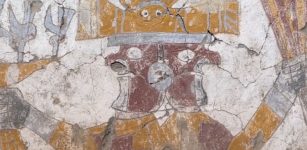 Ancient Murals Of Mysterious Two-Faced Beings And Supernatural Creatures At Pañamarca, Peru
Archaeology | Mar 21, 2023
Ancient Murals Of Mysterious Two-Faced Beings And Supernatural Creatures At Pañamarca, Peru
Archaeology | Mar 21, 2023 -
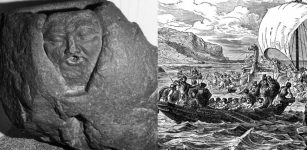 Ancient Mysteries Of Chicago: Is The Puzzling Waubansee Stone A Neglected Pre-Columbian Artifact?
Artifacts | Mar 4, 2017
Ancient Mysteries Of Chicago: Is The Puzzling Waubansee Stone A Neglected Pre-Columbian Artifact?
Artifacts | Mar 4, 2017

